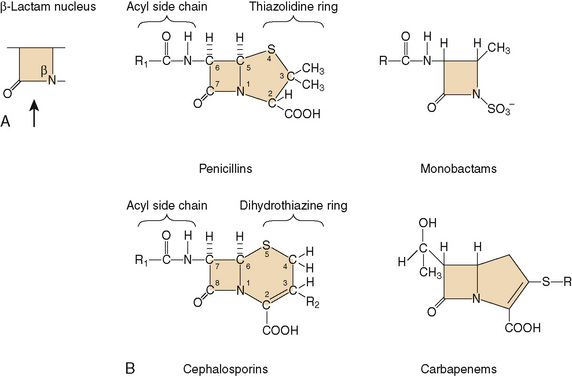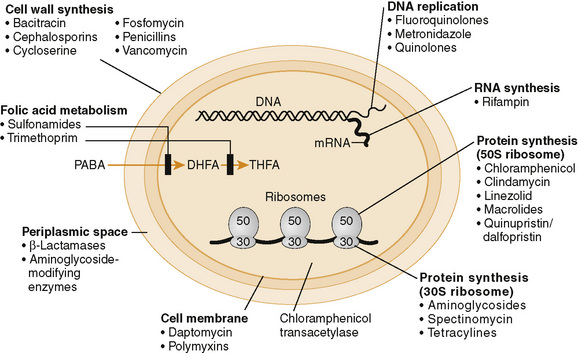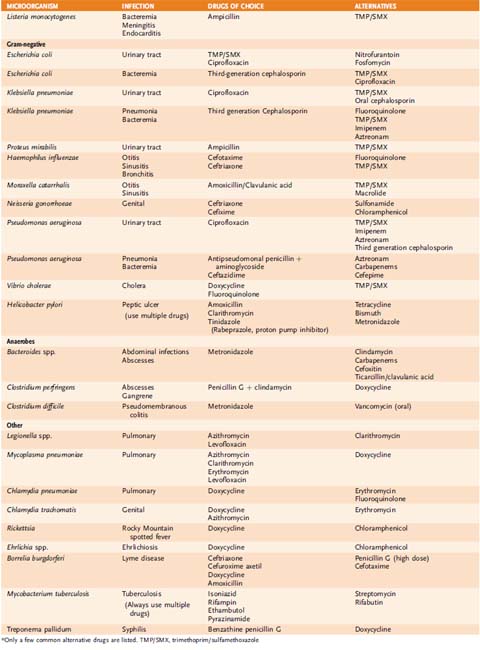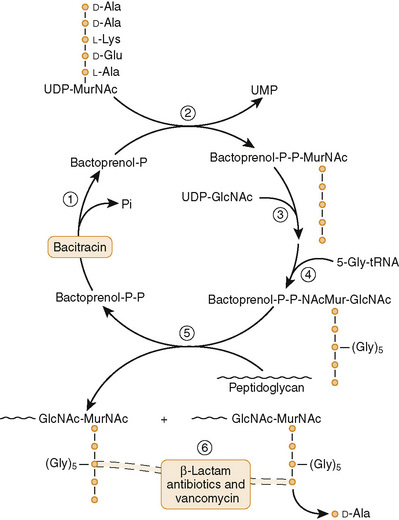Chapter 27 Antimicrobial Drugs
• Sufficient levels to destroy microorganisms in order to prevent development of microbial resistance
f. Use multiple drugs in combination chemotherapy when the pathogen is noted to develop resistance to an individual drug rapidly.
TABLE 27-3 Bactericidal and bacteriostatic antibacterial agents
| Bactericidal Agents | Bacteriostatic Agents |
|---|---|
TABLE 27-4 Prophylactic Use of Anti-infective Drugs
| Drug | Use |
|---|---|
| Cefazolin | Surgical procedures |
| Cefoxitin, cefotetan | Surgical procedures in which anaerobic infections are common |
| Ampicillin or penicillin | Group B streptococcal infections |
| Trimethoprim-sulfamethoxazole | |
| Rifampin | |
| Chloroquine, mefloquine | Malaria |
| Isoniazid, rifampin | Tuberculosis |
| Azithromycin | Mycobacterium avium complex in patients with AIDS |
| Ciprofloxacin | Bacillus anthracis (anthrax) |
| Ampicillin or azithromycin | Dental procedures in patients with valve abnormalities |
AIDS, acquired immunodeficiency syndrome; UTI, urinary tract infection.
• These reactions are most notable with penicillins and sulfonamides but can occur with most antimicrobial drugs.
• Treatment with oral nystatin (local effects), miconazole (local vaginal effects), fluconazole (oral medication for vaginal candidiasis)

27-3 Structures of β-lactam drugs.
(From Wecker L, et al.: Brody’s Human Pharmacology, 5th ed. Philadelphia, Mosby, 2010, Figure 46-1.)
• Cephalothin, the prototype first-generation cephalosporin, is no longer available in the United States.
(2) Cefazolin has good activity against gram-positive bacteria and modest activity against gram-negative bacteria.
(2) Increased activity against gram-negative bacteria (E. coli, Klebsiella, Proteus, Haemophilus influenzae, Moraxella catarrhalis)
(2) Decreased activity against gram-positive bacteria but increased activity against gram-negative bacteria (Enterobacter, Serratia)
Stay updated, free articles. Join our Telegram channel

Full access? Get Clinical Tree







